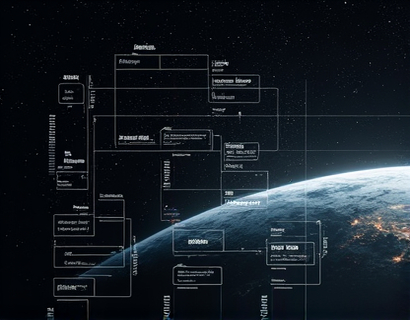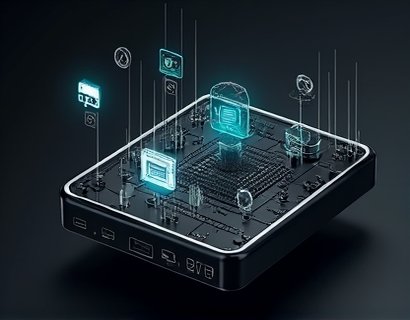Maximizing Engagement and Growth: Leveraging AI and Crypto for Digital Transformation in the Tech Frontier
The digital landscape is rapidly evolving, driven by the convergence of artificial intelligence (AI) and blockchain technology. Businesses and tech enthusiasts seeking to maximize engagement and growth must navigate this complex terrain with strategic insights. This article delves into the ways AI and crypto can be integrated to enhance online presence and drive sustainable growth in the tech frontier.
Digital transformation is no longer a choice but a necessity for businesses aiming to stay competitive. The integration of AI and blockchain offers a powerful toolkit for organizations to innovate, streamline operations, and connect with users in meaningful ways. By leveraging these technologies, businesses can unlock new opportunities, enhance user experiences, and foster a robust online community.
Understanding AI and Blockchain
Artificial intelligence refers to the simulation of human intelligence processes by machines, particularly computer systems. These processes include learning (the acquisition of information and rules for using it), reasoning (using rules to reach approximate or definite conclusions), and self-correction. AI technologies such as machine learning, natural language processing, and computer vision are transforming industries by automating tasks, providing insights from data, and creating intelligent applications.
Blockchain technology, on the other hand, is a decentralized digital ledger that records transactions across multiple computers in such a way that the registered transactions cannot be altered retroactively. This technology ensures transparency, security, and immutability, making it ideal for applications requiring trust and verification, such as financial transactions, supply chain management, and identity verification.
Synergizing AI and Blockchain
The true potential of AI and blockchain is realized when they are combined. AI can process and analyze the vast amounts of data stored on a blockchain, providing insights and automating decision-making processes. Conversely, blockchain can enhance AI systems by ensuring data integrity, reducing the risk of fraud, and enabling trustless interactions. This synergy creates a powerful framework for digital transformation.
For businesses, integrating AI and blockchain can lead to more efficient operations, enhanced security, and innovative products and services. For tech enthusiasts, this combination opens up new avenues for exploration and development, fostering a vibrant ecosystem of innovation.
Enhancing Online Presence with AI and Blockchain
In the digital age, having a strong online presence is crucial for visibility and engagement. AI and blockchain can significantly enhance a brand's online footprint in several ways.
Firstly, AI-driven content creation and personalization can tailor experiences to individual users, increasing engagement and satisfaction. By analyzing user behavior and preferences, AI algorithms can generate content that resonates with the audience, from personalized recommendations to dynamic website content.
Secondly, blockchain can ensure the authenticity and ownership of digital assets, such as content, artwork, and even virtual real estate. This is particularly relevant in the context of social media and online communities, where users value unique and verifiable content. By leveraging blockchain, brands can create exclusive digital experiences that foster loyalty and engagement.
Thirdly, AI-powered chatbots and virtual assistants can provide 24/7 customer support, handling queries and transactions efficiently. When integrated with blockchain, these systems can offer secure and transparent interactions, building trust with users.
Driving Growth Through Innovative Applications
The combination of AI and blockchain is not just about enhancing existing processes; it also opens up new business models and revenue streams. Here are some innovative applications that businesses can explore to drive growth.
1. Decentralized Marketplaces: AI can optimize matching algorithms in decentralized marketplaces, ensuring that buyers and sellers find each other efficiently. Blockchain ensures secure transactions and smart contracts, reducing the need for intermediaries and lowering costs.
2. Tokenized Loyalty Programs: Traditional loyalty programs can be transformed using blockchain tokens. AI can analyze user behavior to create dynamic reward systems, where tokens are earned and redeemed based on specific actions, enhancing user engagement and retention.
3. Data Monetization: Businesses can leverage AI to extract valuable insights from their data and sell these insights as tokens on blockchain platforms. This not only generates additional revenue but also creates a new ecosystem where data is a valuable asset.
4. Supply Chain Optimization: AI can predict demand and optimize inventory management, while blockchain ensures transparency and traceability in the supply chain. This combination can reduce costs, improve efficiency, and enhance customer trust.
5. Intelligent Advertising: AI-driven advertising platforms can target users with high precision, while blockchain ensures that ad impressions and clicks are verified and rewarded fairly. This creates a more transparent and effective advertising ecosystem.
Building a Robust Digital Ecosystem
To fully leverage AI and blockchain, businesses need to build a robust digital ecosystem that integrates these technologies seamlessly. Here are some strategic steps to achieve this:
1. Assess Current Infrastructure: Evaluate existing systems and identify areas where AI and blockchain can add value. This includes data management, customer interactions, and operational processes.
2. Develop a Clear Strategy: Define clear goals and objectives for integrating AI and blockchain. This strategy should align with the overall business vision and address specific pain points.
3. Invest in Talent and Technology: Build a team with expertise in AI, blockchain, and digital transformation. Invest in the right tools and platforms that support these technologies.
4. Pilot Projects: Start with small-scale pilot projects to test the integration of AI and blockchain. This approach allows for iterative improvements and helps in building a solid foundation.
5. Foster a Culture of Innovation: Encourage experimentation and continuous learning within the organization. Create a culture that embraces new technologies and fosters collaboration between different departments.
Overcoming Challenges
While the potential benefits are significant, integrating AI and blockchain also comes with challenges. Addressing these proactively is essential for successful implementation.
1. Technical Complexity: Both AI and blockchain are complex technologies that require specialized knowledge. Investing in training and hiring experts can help overcome this barrier.
2. Regulatory Uncertainty: The regulatory landscape for blockchain and AI is still evolving. Staying informed about regulations and ensuring compliance is crucial to avoid legal issues.
3. Data Privacy: Ensuring user data privacy is paramount, especially when dealing with sensitive information. Implementing robust security measures and adhering to privacy standards is essential.
4. Scalability: As the ecosystem grows, ensuring that AI and blockchain solutions can scale efficiently is critical. This may involve optimizing algorithms and infrastructure to handle increased loads.
Conclusion
The integration of AI and blockchain represents a transformative opportunity for businesses and tech enthusiasts. By leveraging these technologies, organizations can enhance their online presence, drive growth, and innovate in ways that were previously unimaginable. The key lies in understanding the synergies between AI and blockchain, building a robust digital ecosystem, and overcoming the challenges that come with these advanced technologies. As the tech frontier continues to evolve, those who embrace AI and blockchain will be well-positioned to lead the way.










































